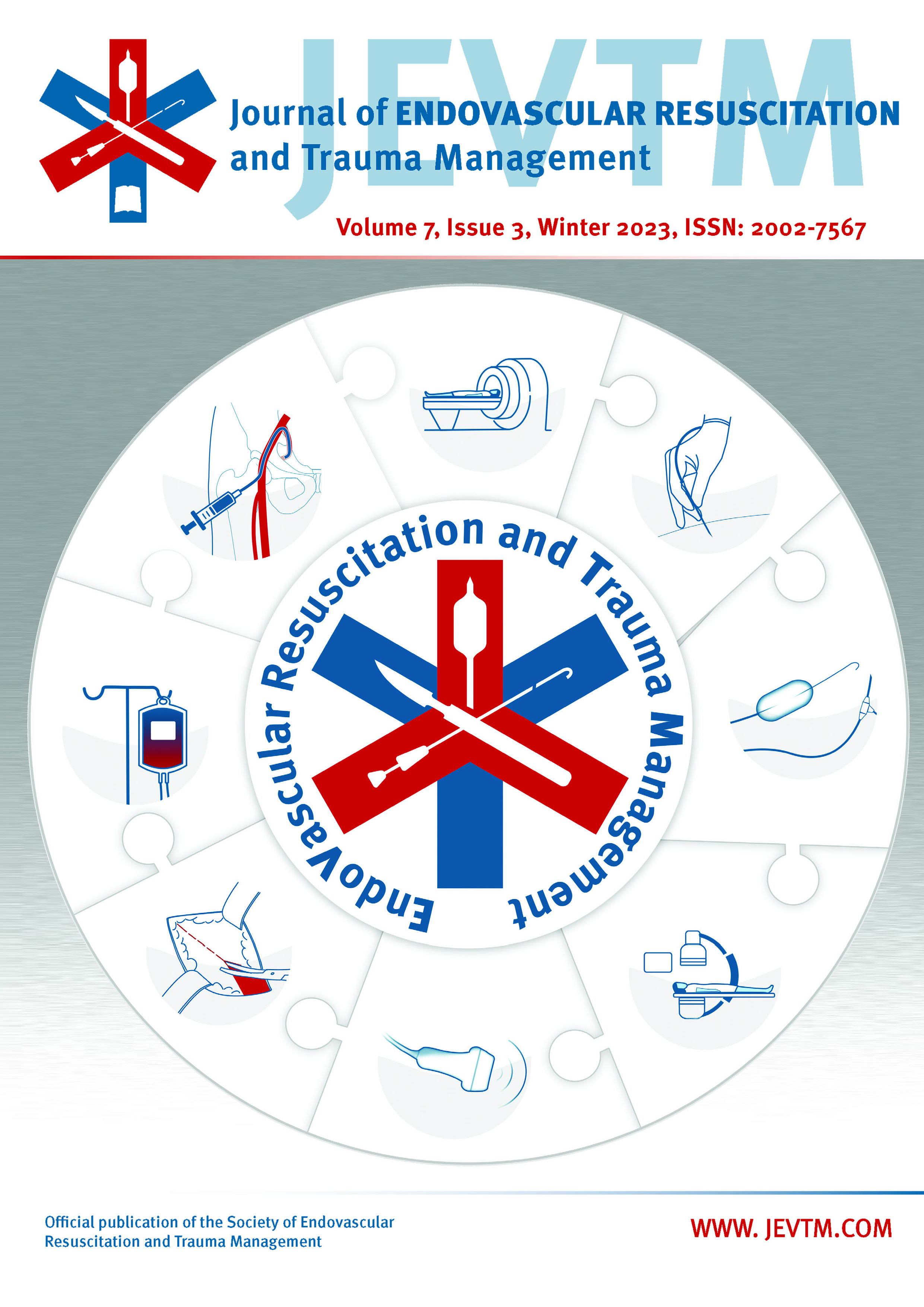REBOA: A Device to Gain Time
DOI:
https://doi.org/10.26676/jevtm.18304Keywords:
Resuscitative Endovascular Balloon Occlusion of the Aorta, REBOA, Aortic Occlusion, Endovascular Procedures, Emergency, BleedingAbstract
The management of trauma and emergency procedures (i.e., aneurysm repair, visceral and pelvic bleeding, and others) has undergone considerable changes due to the presence of new endovascular and mini-invasive approaches, which have supplanted the surgical approach in some cases. The use of Resuscitative Endovascular Balloon Occlusion of the Aorta (REBOA) has been largely used to manage trauma patients, but it is, nowadays, increasingly also being used for other types of bleeding, such as vascular emergencies, post-partum hemorrhages, and gastrointestinal and iatrogenic or spontaneous bleeding. We present a case of an unexpected hemorrhagic shock in a patient with a locally advanced cervix neoplasm involving sacrum and pelvic vessels, where we used a REBOA to manage an intraprocedural massive bleed due to the rupture of the descending branch of the right hypogastric artery.
Downloads
Published
How to Cite
Issue
Section
License
Copyright (c) 2024 Carolina Lanza, Salvatore Alessio Angileri, Jacopo Fumagalli, Pierpaolo Biondetti, Serena Carriero, Velio Ascenti, Anna Maria Ierardi, Hayato Kurihara, Gianpaolo Carrafiello

This work is licensed under a Creative Commons Attribution 4.0 International License.
Authors of content published in the JEVTM retain the copyright to their works.
Articles in the JEVTM are published under the terms of a Creative Commons CC BY 4.0 license, which permits use, downloading, distribution, linking to and reproduction in any medium, provided the original work is properly cited.




